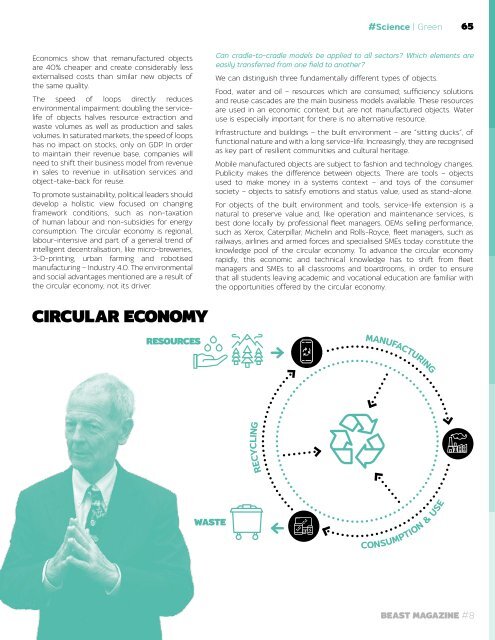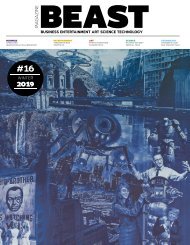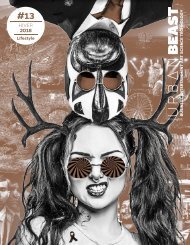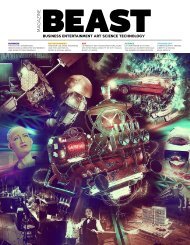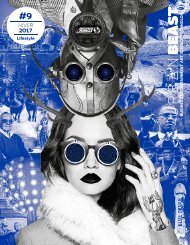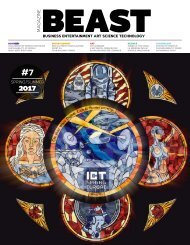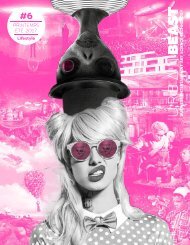Magazine_BEAST_2017_Edition_8_complet
Create successful ePaper yourself
Turn your PDF publications into a flip-book with our unique Google optimized e-Paper software.
#Science | Green<br />
65<br />
Economics show that remanufactured objects<br />
are 40% cheaper and create considerably less<br />
externalised costs than similar new objects of<br />
the same quality.<br />
The speed of loops directly reduces<br />
environmental impairment: doubling the servicelife<br />
of objects halves resource extraction and<br />
waste volumes as well as production and sales<br />
volumes. In saturated markets, the speed of loops<br />
has no impact on stocks, only on GDP. In order<br />
to maintain their revenue base, companies will<br />
need to shift their business model from revenue<br />
in sales to revenue in utilisation services and<br />
object-take-back for reuse.<br />
To promote sustainability, political leaders should<br />
develop a holistic view focused on changing<br />
framework conditions, such as non-taxation<br />
of human labour and non-subsidies for energy<br />
consumption. The circular economy is regional,<br />
labour-intensive and part of a general trend of<br />
intelligent decentralisation, like micro-breweries,<br />
3-D-printing, urban farming and robotised<br />
manufacturing – Industry 4.0. The environmental<br />
and social advantages mentioned are a result of<br />
the circular economy, not its driver.<br />
Can cradle-to-cradle models be applied to all sectors? Which elements are<br />
easily transferred from one field to another?<br />
We can distinguish three fundamentally different types of objects.<br />
Food, water and oil – resources which are consumed; sufficiency solutions<br />
and reuse cascades are the main business models available. These resources<br />
are used in an economic context but are not manufactured objects. Water<br />
use is especially important for there is no alternative resource.<br />
Infrastructure and buildings – the built environment – are “sitting ducks”, of<br />
functional nature and with a long service-life. Increasingly, they are recognised<br />
as key part of resilient communities and cultural heritage.<br />
Mobile manufactured objects are subject to fashion and technology changes.<br />
Publicity makes the difference between objects. There are tools – objects<br />
used to make money in a systems context – and toys of the consumer<br />
society – objects to satisfy emotions and status value, used as stand-alone.<br />
For objects of the built environment and tools, service-life extension is a<br />
natural to preserve value and, like operation and maintenance services, is<br />
best done locally by professional fleet managers. OEMs selling performance,<br />
such as Xerox, Caterpillar, Michelin and Rolls-Royce, fleet managers, such as<br />
railways, airlines and armed forces and specialised SMEs today constitute the<br />
knowledge pool of the circular economy. To advance the circular economy<br />
rapidly, this economic and technical knowledge has to shift from fleet<br />
managers and SMEs to all classrooms and boardrooms, in order to ensure<br />
that all students leaving academic and vocational education are familiar with<br />
the opportunities offered by the circular economy.<br />
CIRCULAR ECONOMY<br />
RESOURCES<br />
MANUFACTURING<br />
RECYCLING<br />
WASTE<br />
CONSUMPTION & USE<br />
<strong>BEAST</strong> MAGAZINE #8


